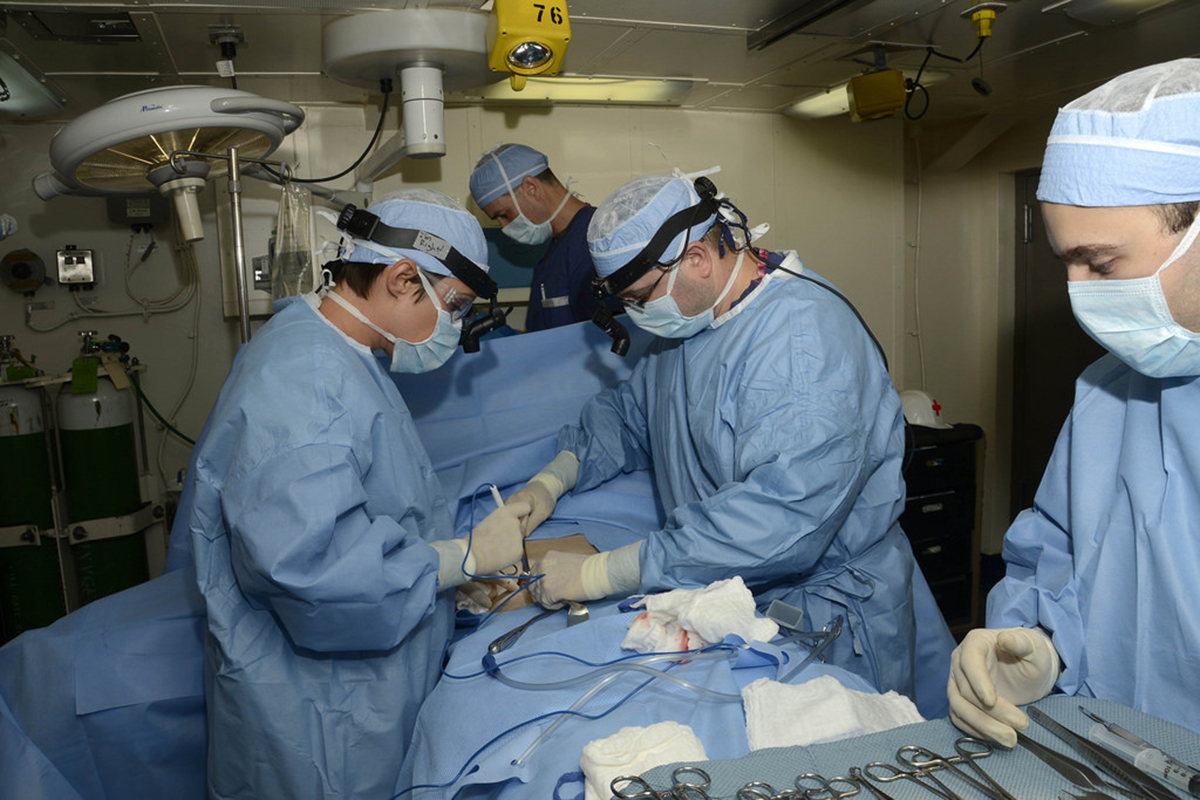An appendicular mass may be defined as a grouping of inflamed tissue in the right lower quadrant. This mass, which affects the inflamed appendix as well as the tissues around it, is one of the possible complications of untreated or undiagnosed appendicitis. It usually surrounds an intensely inflamed or ruptured appendix.

What is the Appendix?
The appendix is an approximately 3.5 inch long worm-shaped tube of tissue. It projects from the first part of the large intestine (colon), and extends from the lower right part of the abdomen. [1] The appendix is unique in that it has no known function in digestion or otherwise, and we can therefore easily survive without it.
However, an infection of the appendix can have serious consequences and can even be life-threatening. This explains why surgeons are quick to recommend its removal at the first sign of trouble.
What is Appendicitis?
Appendicitis is defined as an inflammation or swelling of the inner lining of the appendix. This inflammation, which is not uncommon, may spread to other parts of the intestine as well. Despite medical advancements, appendicitis is still regarded as a medical emergency requiring immediate surgery. [1]
What is an Appendicular Mass?
Appendicitis is a common disorder found in young patients worldwide. The diagnosis of appendicitis is made on a clinical basis according to the presenting complains. Lab tests are not considered reliable. However, these tests are found to be very helpful in making the correct diagnosis. Most of the patients with appendicitis present in an emergency department with severe pain in the right lower quadrant of the abdomen. Because of the severe pain, surgeons do not have much time to wait for the laboratory tests and the diagnosis is made on a clinical basis.
Appendicitis can also present with complains that are not typically associated with appendicitis. The patient may complain of pain on both sides of the lower abdomen rather than in the right region only. A patient may have no fever, which makes the diagnosis of appendicitis questionable. Keeping in mind all these conditions, surgeons now perform an appendectomy (removal of the inflamed appendix) prophylactically, meaning as a routine precaution even if they are not sure whether the patient indeed has appendicitis. [2]
But still, a surgeon who performs an appendectomy on the grounds of a suspicion is considered to be a good surgeon. This is because undiagnosed appendicitis is like a time bomb which can rupture any time, risking a patient’s life. Ruptured appendicitis can even lead to death.
READ How to recognize the Signs of Acute Appendicitis?
How does Appendicitis lead to an Appendicular Mass?
An appendicular mass is a rare complication in developed countries. It is usually seen in developing nations or third world countries where people are reluctant to have surgery. There are certain factors that lead to the formation of an appendicular mass. Some of the most common reasons why people develop appendicular mass include [4]:
- An undiagnosed appendicular infection
- Delayed diagnosis of appendicitis
- Appendicitis in patients with diabetes: If a patient has developed diabetic neuropathy, he may not feel very severe pain as a result of which appendicitis may be misdiagnosed.
- Poverty: Lack of money for surgery
- Fear of surgery
- Patients in rural areas: General physicians usually keep the patient on painkillers instead of referring a risky patient to high level hospital
Appendicular Mass – Management Regimes
The management of appendicular mass is still debatable. There are two distinct schools of thought that exist with respect to the modes of treatment. At present, four methods are being used, and supporters and critics exist for each.

1. Conventional Method with Interval Appendectomy: The Ochsner-Sherren Regime
This is a conventional method that assumes that the patient is sound and begins with an initial conservative treatment. After about 6-8 weeks, an interval appendectomy is performed if necessary. The basis of this method was the belief that surgery during the period of acute appendicitis was significantly dangerous and life-threatening. This was because of the severe complications such as edema and fragility of important structures like the terminal ileum and cecum due to the appendicular mass. [5]
The main steps involved in this regime are as follows:
- The patient is made to sit in an upright position in order to promote the flow of any exudates naturally towards the pelvis.
- Nothing is administered via the mouth for the first 24-48 hours. The patient is kept strictly on IV fluids.
- IV antibiotics may be given along with the regular monitoring of vital signs and the size of the appendicular mass.
- In certain cases, the general condition of the patient improves and reduction in the size of the mass is seen. Moreover, fever and lack of appetite also subside. The patient is then normally allowed to have liquids orally, followed slowly by food. If the patient is able to tolerate the food and water, he is considered for being sent home. After about 6-8 weeks, an interval appendectomy is performed.
- On the contrary, the overall condition of the patient may start to deteriorate. The mass may increase in size, the pulse rate may rise, general peritonitis may occur, and the patient may become septic. In such a scenario, the period of conservative management is shortened and appendectomy is considered.
2. Conservative Method without Interval Appendectomy
This form of conservative treatment does not involve an interval appendectomy. It was introduced after the Ochsner-Sherren regime was seen to have failed in 2-3% of the cases. According to some researchers, an interval appendectomy was considered to be a tedious operation, at times unable to find the fibrotic appendix altogether. This led to the development of a cost-effective ‘wait and watch policy’, where monitoring the results of the conservative treatment was given priority instead of ultimately resorting to surgery. [6]
Conservative treatment such as this has been found to be solely adequate in 80% of patients. The highest risk of developing recurrent appendicitis, after undergoing an effective conservative management, lies in the first 6 months. These risks diminish to a minimum of 2 years.
3. Early Appendectomy
This is an aggressive approach that favors the removal of the appendicular mass at the early stages of infection.
A study that compared the delayed appendectomy with an early appendectomy concluded that delayed appendectomy was safe and feasible for adult patient although the clinical outcomes of delayed appendectomy were not superior to those of early appendectomy. The study suggests that surgeons decide the appropriate timing of appendectomy, citing available hospital resources as one of the biggest factors.[7] Other studies conclude that early appendicectomy has been found to be a safe and better alternative for management of appendicular mass in various studies in adults, while only a few studies report advantages like these in the pediatric population.[8]
4. Laparoscopic Management
This minimally-invasive procedure is the most recent advancement in the treatment of appendicular mass and is becoming the preferred technique for treating acute appendicitis. However, its role in the treatment of complicated appendicitis is still controversial, despite the fact that new research continues to show that laparscopy is a safe way to manage an appendicular mass. [9]
- Photo courtesy of U.S. Pacific Air Forces by Flickr: www.flickr.com/photos/pacificairforces/7183303571
- Photo courtesy of U.S. Naval Forces Central Command/U.S. Fifth Fleet by Flickr: www.flickr.com/photos/navcent/15481839211
- www.ijsurgery.com/index.php/isj/article/view/2724
- www.ncbi.nlm.nih.gov/pmc/articles/PMC4587501/#:~:text=An%20appendiceal%20mass%20is%20an,(CT)%2C%20and%20ultrasound

